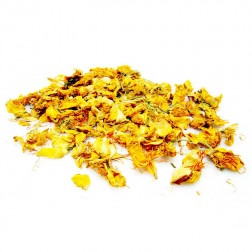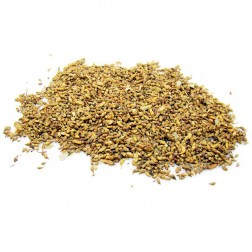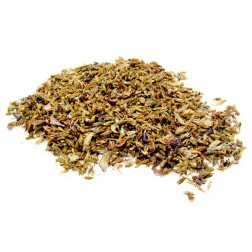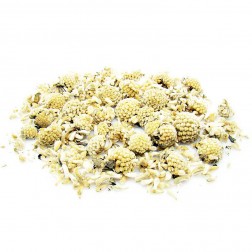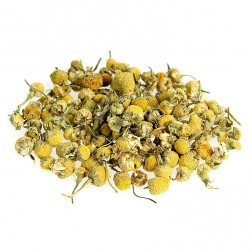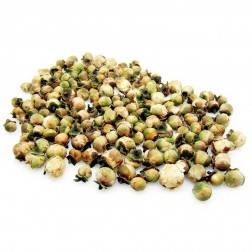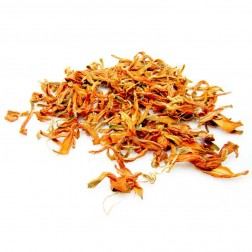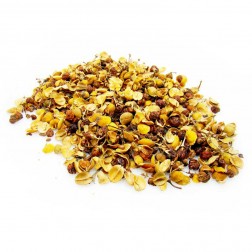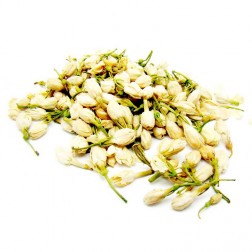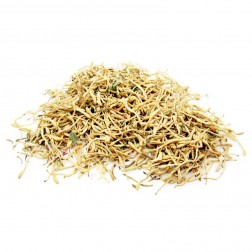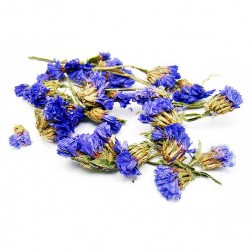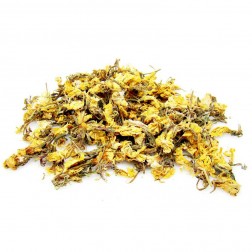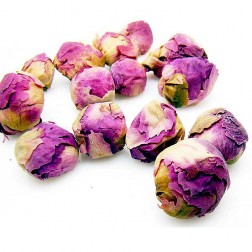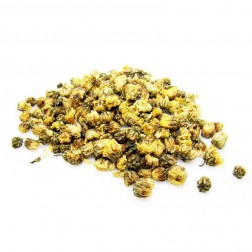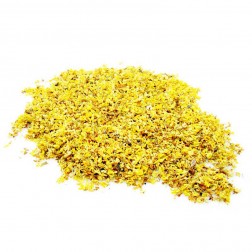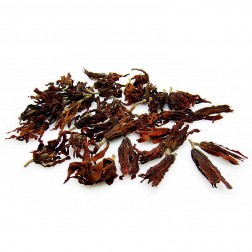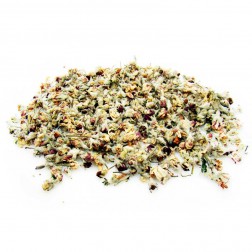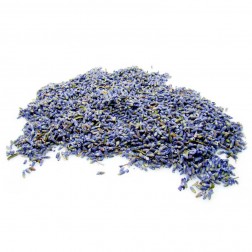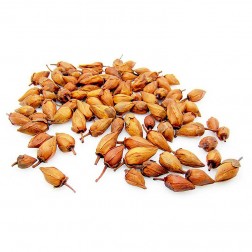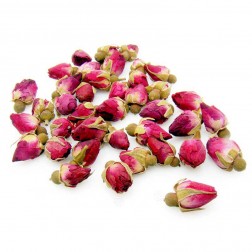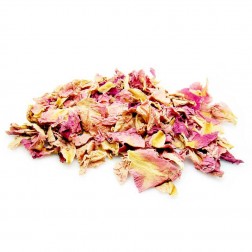Description
Details
Traditionally, a violet tea was a spring event, held when the flowers were in bloom. As violets are among the most delicate of flowers, the Edwardian violet tea was presented in a very dainty fashion. All food was especially light and miniaturized, with bite sized scones and open-faced sandwiches flavored with violet jelly or crystallized violets. A light tea, such as a Darjeeling or Oo-long, complemented the menu.
Today's violet tea can easily feature a wider range of menu possibilities, as as a number of good books about edible flowers are now available, all of which include violet recipes. A surprising number of violet recipes can also be found on the web. While serving a violet jelly and a violet flavored drink is following tradition, there is no reason why a violet leaf butter or a petite violet salad cannot be a worthy addition to your tea table.
For decor, use violets as much as possible (pansies and Johnny-jump-ups can be used in a pinch, as they are related to violets). As this was a tea traditionally held for very close friends, it is particularly inviting to set small tables for two or three people. While the Edwardians favored white table-cloths, consider a pale violet or light green table covering. A few violet flowers, with their pretty, heart shaped leaves, put into an old perfume jar creates a charming centerpiece for a small table setting. If you are fortunate enough to own any violet patterned china or serving pieces, this would be the time to bring them out (or to consider beginning a collection!). Place a crystallized violet on each plate and garnish all serving dishes with violets.
Tea favors for a violet tea are easy. Packets of violet seeds wrapped with silk ribbon make a perfect favor. Vintage calling cards and postcards featuring violets are actually fairly easy to find, due to the exuberance of 19th century print artists, and make a very special favor. Check your local library for Helen Gibbs' The Secret of Fashioning Ribbon Flowers. Copy the directions for creating a ribbon violet (or pansy) for each guest, and gather together the needed ribbon. Purchase small pin backs froma craft store, put everything in a purple velum bag, and you now have a simple take home ribbon craft for each guest.
A violet tea is an event requiring more than the usual planning. And, as with any gardening endeavor, a certain degree of patience is required. I am content to wait for the violet tea that is in my future. Perhaps while I wait, my time would be best spent searching for a few pieces of china sprinkled with violet springs. A violet teapot would be the most perfect find!
Violets have been used to improve acne, anger, asthma, bronchitis, colds, eczema, fever, fibrocystic breast disease, grief, headache, heartbreak, lymphatic congestion, mastitis, mumps, psoriasis, scurvy, sore throat, ulcers, urinary tract infection, varicose veins, and whooping cough. Apply a cloth soaked in violet leaf and/or flower tea to the back of the neck to treat headaches. The flowers are eaten as a breath freshener.
Violet flower essence helps those that feel lonely, despite being surrounded by others. It increases openness and helps shy aloof people that want to share but feel overwhelmed. They have both expectorant and diuretic properties and can be taken in a tea for coughs, colds, and rheumatism. Make a pot of violet tea to use as a gargle, or add honey to thicken the tea.
In Pakistan, violet tea is drunk to increase sweating and reduce fever. It's also said that violets relieve anxiety, insomnia and reduce high blood pressure. In the 17th century throat lozenges, made with violet conserve, were used to treat bronchitis, as well as to combat sinus congestion.
Most common functions of violet flowers:
hay fever
allergies
clearing sinuses
clearing the chest
relieve congestion
relieves sinus headache
breast cancer
weeping eczema and skin complaints
boils and carbuncles
Additional
Additional Information
| Wholesale Notice | Have a Question about Wholesale? Please check the detailed instruction page here. |
|---|---|
| SKU | ESF-032 |
| Chinese Name | 紫罗兰(zǐ luó lán) |
| Other Names | Matthiola incana |
| Teaware | Glass Pot, Glass(Tumbler), Piao Yi Tea Maker |
| Water Temperature | 80℃(176℉)~85℃(185℉) |
| Steeping Instructions | Place herbals into the glass pot→Add hot water→Steep for 3-5 minutes(A candle warmer could be used to achieve better results) |
| Storage | Seal tightly, store in a cool, dry place away from sunlight and odour. |
| Country of Manufacture | China |
| Price | $1.95 |
| Packing & Weight | 50g~500g/bag. Default packing with aluminium coated kraft paper bag. |
Reviews
If you have any question concerns about our products or don't find what you need on our site, please contact us via [email protected] and we'll reply soon!


